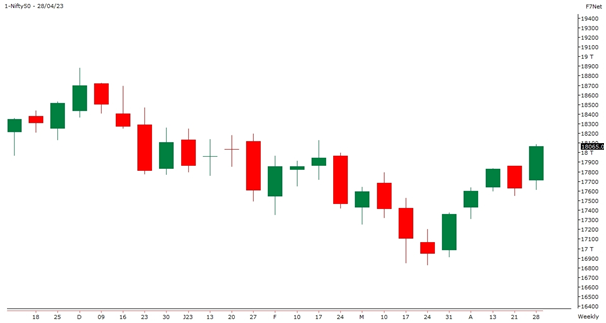Stock Market Updates for April, 2023
28th April, 2023
Welcome to the Megatrend of Automobile Industry
The Wheels of India embraced the challenges faced in the past few years and now it is at the cusp of rapid growth over the next decade. There is absolutely no brake on consumer mobility behaviour when it comes to the adoption of new technology innovations and trends in the Automobile Industry. Connectivity, Autonomous Driving, Shared Mobility, and Electrification (C.A.S.E) are the megatrends driving end-user preferences.
Therefore, the auto industry is not just a traditional business anymore and this transformation of heavy machinery is built with a goldmine of opportunities. Businesses are reviewing how they used to function and are evaluating ways to create new rules for success. This has gained the attraction of a number of industry players from various sectors in the mobility space.
Here’s a look at six diverse sectors that stands to gain an advantage from the disruption!

With a transition into the mobility ecosystem, a network of sectors can leverage their existing capabilities for numerous applications. The new auto ecosystem 2.0 requires taking different approaches, making bold moves, aligning strategic priorities, building new business models, taking collaborative efforts, forging new partnerships, investing in technologies and R&D, and so on. Both, the new entrants and big players with a broader vision in mind are actively exploring opportunities to capture the market’s tremendous economic potential.
The ecosystem will unleash new income streams to foster the growth of futuristic vehicles in India.
To give you a gist, the futuristic vehicles will require battery-related chemicals while increased use of sensors will require a distinct set of chemicals. The rising demand for C.A.S.E vehicles will require more safety, fuel efficiency, and increased scrutiny of environmental impact. Therefore, chemical companies need to be at the top of their game and respond to the changes quickly. On the other side, the domestic production of lithium batteries will reduce our dependency on imports and make electric vehicles cheaper, paving the way for India’s path to electrification. Further, auto tech companies will revolutionize vehicles with the growing number of software-driven technologies.
Various industry players must work hand-in-hand and position themselves differently to reap the benefits.
Therefore, auto ecosystem 2.0 will offer win-win situations for all the players involved and will lead to the New Era in the Automotive Industry. In order to capitalize on the long-term opportunity, investors can pile stocks of fundamentally sound companies from the auto ecosystem.
Technical Analysis:
The frontline index has protected its lower levels and shown positive momentum after finding support near its 50 EMA on the weekly chart. The index re-energized after its previous three months' loss and closed above its previous month's high at 18,065 levels with a gain of 4.06% on a month-on-month basis..
Nifty starts its May series expiry with a follow-through move and trading in a higher high higher bottom formation on the daily time frame. The index has broken its previous week's consolidation range and closed in the green for all five days in the week.
The frontline index formed a doji candlestick pattern on the monthly chart which indicates indecision in a spiky volatile market. The strong bullish candle immediately after the doji formation suggests prices have found support near the low of the candle.
Nifty stands at strong support near 21 EMA at 17,650 levels on the daily chart. If prices fail to hold at a given level, then it's likely to see a further correction toward 17,400 levels. The major hurdle for bulls will be faced near 18,200 levels, if prices break above the said levels, then we will be witnessing a continuation of higher high formation. Nifty50 closed the week at 18,065 up 2.50%.


 Easy & quick
Easy & quick